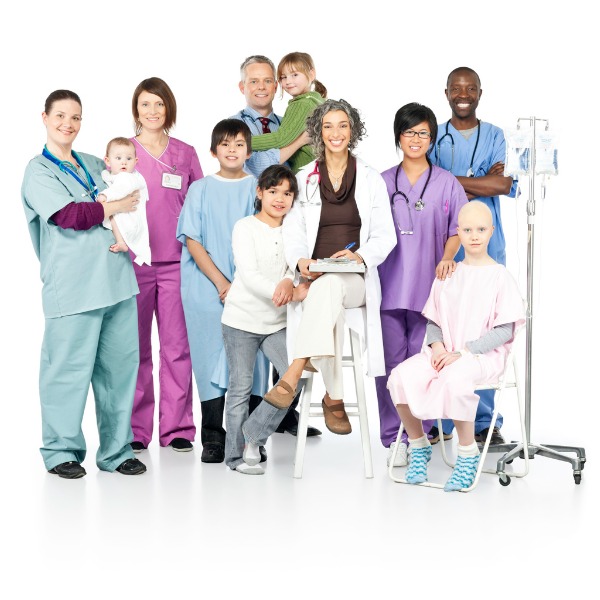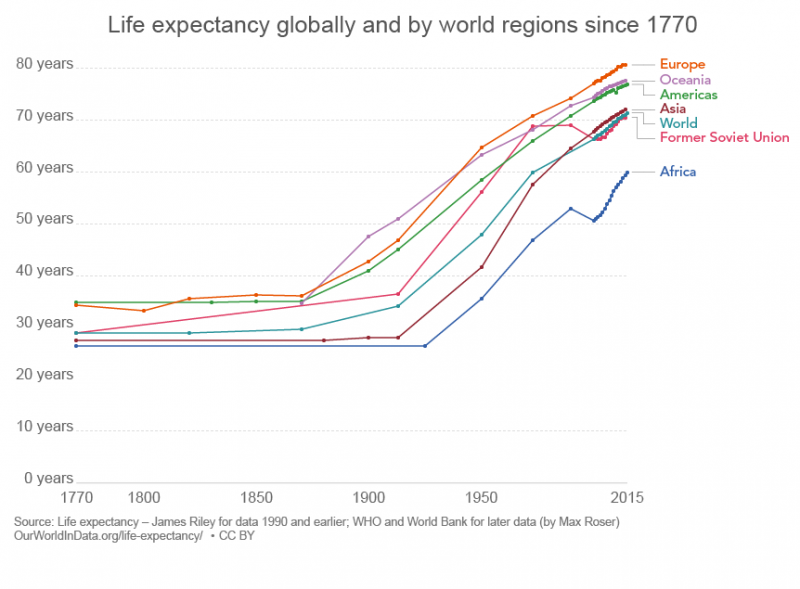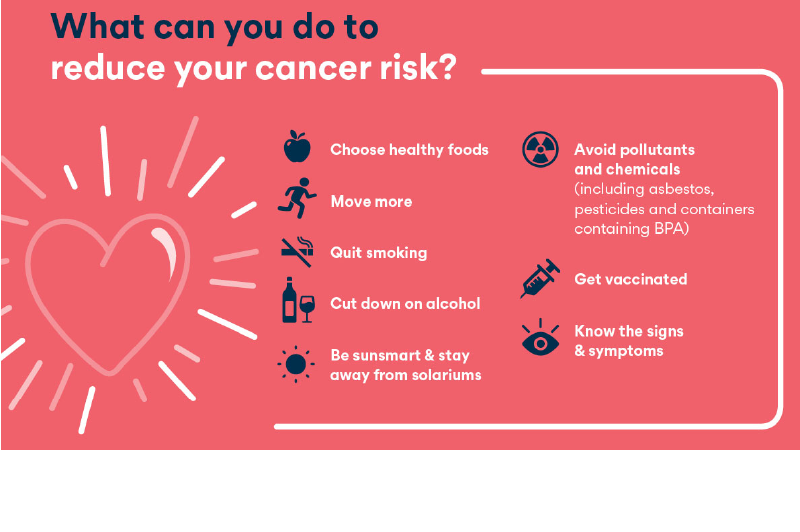Why Do So Many People Get Cancer?

People with cancer (ranplett, iStockphoto)

People with cancer (ranplett, iStockphoto)
How does this align with my curriculum?
| Grade | Course | Topic |
|---|
We all know someone who has been affected by cancer. What causes cancer? Why is it getting more common?
Cancer is a disease that has been around since ancient times. But it seems that more and more people are getting it. Why is this?
Cancer starts with the uncontrolled growth of a single mutated cell. This cell has the unlimited potential to keep dividing and growing.
Scientists have identified over 200 different types of cancer. Statistics show that cancer rates are on the rise. But generally, people are also living longer. According to the Canadian Cancer Society, about 1 in 2 Canadians will develop cancer in their lifetimes . Some medical professionals have suggested modern lifestyles are to blame. To some extent, this is true. For example, smoking can cause cancer. So can air pollution caused by human activities, like driving and industrial processes. But the very fact that people are living longer means that our chances of developing cancer increases. This is because cancers often take a while to develop. In the past, people often died of something else before cancer had a chance to develop.
Why are people living longer? This is due to better standards of living and access to medicines, vaccines and health care. Because of advances in medicine and public health, people are a lot less likely to die from diseases that killed people in the past. Examples include typhoid, tuberculosis, and even influenza. For example, in 1918-19, an influenza pandemic known as the Spanish flu killed approximately 50 million people worldwide. Today, things are very different. We have the option of getting a flu shot. That flu shot is specifically designed to target the most common flu viruses for that season.

What Causes Cancer?
Just as there are a variety of different forms of cancer, there are a wide variety of causes. Cancer can be caused by our genes and can be inherited from our parents. Certain viruses can cause cancer. One example is the Human Papilloma Virus (HPV). It has been linked to cervical cancer and other forms of cancer.

Environmental conditions and lifestyle choices can also cause cancer. Toxins and pollutants that we knowingly or unknowingly come in contact with in our daily lives can trigger genetic mutations that lead to cancer.

The big picture of cancer is not all negative. There are lifestyle choices you can make today to reduce your cancer risk. Diagnostic techniques and treatment methods for cancer are constantly improving. The mapping and exploration of the human genome is changing the way doctors screen and assess the risk of getting certain cancers in the first place. For example, you can now be tested for the BRCA1 or BRCA2 gene mutation. These gene mutations can indicate that you are at a higher risk of breast cancer. Armed with this knowledge, someone who tests positive for these gene mutations can have a more intensive screening schedule. This is an example of a proactive measure people can take to prevent getting breast cancer in the first place.
Starting Points
- Do you know anyone with cancer?
- How many different types of cancer can you name?
- What are some of the societal and environmental factors that are leading to an increase in cancer rates? Are there lifestyle choices people can make to reduce the risk of cancer?
- Today, many more people are being diagnosed with various types of cancer. Due to this, people are receiving screening at an earlier age as a preventative measure if there is a history of cancer in their family. Can cancer be genetic?
- What is cancer? How does it relate to cell division?
- Is cancer a new phenomenon? Explain.
- Do a 5-10 minute internet search on the modern day prognosis and treatment of one type of cancer. What advances in technology are helping with treatments and survival rates for this type of cancer?
- In the past, a cancer diagnosis was something kept very private. However, today, many public figures and celebrities have come to the forefront of the media to discuss their cancer diagnosis and treatments. Discuss how this public disclosure and discussion of cancer may be aiding in the treatment and survival rates of people.
- Download ready-to-use reproducibles using the Write-Around Discussion learning strategy for this video in [Google doc] and [PDF] formats.
- Pass out page one of the reproducible.
- Ask students to brainstorm in groups of 2-3 and write their ideas and understandings about cancer using the pre-viewing questions (in jot note form). In the discussion box, have them write any questions they may have about cancer. Students can share their answers and ideas with the rest of the class.
- Watch the videos embedded in this article. Encourage students to take notes on what they are learning or any interesting facts that are presented in the video.
- Using the post-viewing question sheet, ask students to reflect in their group on what they have learned from the video and compare answers with their original ideas and those of their classmates. How have their ideas changed?
- If time or interest permits, students can complete research on cancer. See questions under Relating Science and Technology to Society and the Environment and Media Literacy.
Connecting and Relating
- Do you know anyone with cancer?
- How many different types of cancer can you name?
Relating Science and Technology to Society and the Environment
- What are some of the societal and environmental factors that are leading to an increase in cancer rates? Are there lifestyle choices people can make to reduce the risk of cancer?
Exploring Concepts
- Today, many more people are being diagnosed with various types of cancer. Due to this, people are receiving screening at an earlier age as a preventative measure if there is a history of cancer in their family. Can cancer be genetic?
- What is cancer? How does it relate to cell division?
Nature of Science/Nature of Technology
- Is cancer a new phenomenon? Explain.
- Do a 5-10 minute internet search on the modern day prognosis and treatment of one type of cancer. What advances in technology are helping with treatments and survival rates for this type of cancer?
Media Literacy
- In the past, a cancer diagnosis was something kept very private. However, today, many public figures and celebrities have come to the forefront of the media to discuss their cancer diagnosis and treatments. Discuss how this public disclosure and discussion of cancer may be aiding in the treatment and survival rates of people.
Teaching Suggestions
- Download ready-to-use reproducibles using the Write-Around Discussion learning strategy for this video in [Google doc] and [PDF] formats.
- Pass out page one of the reproducible.
- Ask students to brainstorm in groups of 2-3 and write their ideas and understandings about cancer using the pre-viewing questions (in jot note form). In the discussion box, have them write any questions they may have about cancer. Students can share their answers and ideas with the rest of the class.
- Watch the videos embedded in this article. Encourage students to take notes on what they are learning or any interesting facts that are presented in the video.
- Using the post-viewing question sheet, ask students to reflect in their group on what they have learned from the video and compare answers with their original ideas and those of their classmates. How have their ideas changed?
- If time or interest permits, students can complete research on cancer. See questions under Relating Science and Technology to Society and the Environment and Media Literacy.
Learn more
Cancer, its causes and treatments
A more lengthy explanation for younger children from the Woman and Children’s Health Network, including information on cancer in children.
More details about cancer including about specific cancer forms and treatments from the Nemours Foundation.
References
Canadian Cancer Society. (2020). Canadian cancer statistics.